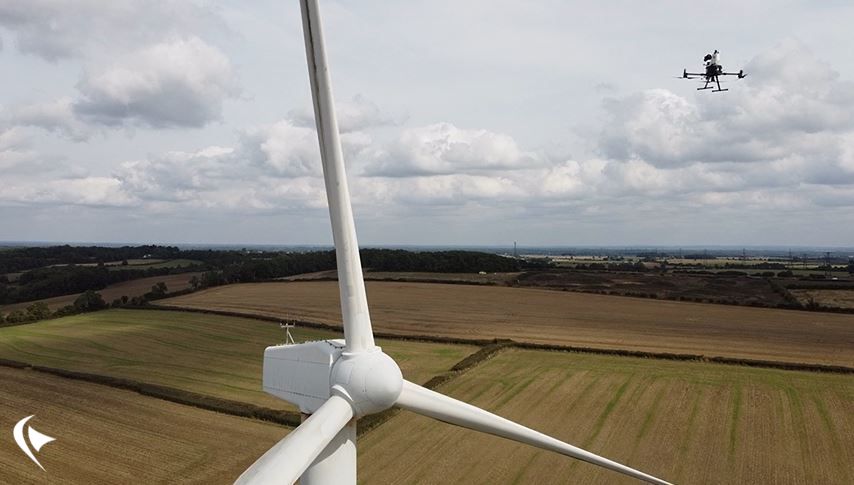The operational integration of inspections
Perceptual Robotics analyses the benefits of implementing drones as part of wind turbine repair strategies to increase efficiency, quality and cost-effectiveness.
As technology and science have evolved over the years, there has been a simultaneous evolution of tools that can adapt to the needs of individual projects.
The growth and development of wind power has created a need for drastic innovation solutions such as blade lifters to carry huge blades in narrow roads, new ways of accessing wind farms offshore and the use of new tools like drones. A key way of ensuring prognostic management of blade health is to utilise the most up to date and cost effective systems available to a site O&M team tool box.
Drones offer a powerful solution for O&M crews due to their ease of use, speed and accuracy.
Drones can be utilised in wind farms for a variety of purposes such as security checks and emergency alerts with precise location information, anemometer status checks and quick visual inspection to check for ice on the blades. During colder snow seasons, drones can carry out a wind turbine accessibility check with a flight taking just under five minutes. Other drone functions include carrying tools and using thermal cameras to ensure substation performance.
By implementing regular structured drone blade inspections, health and safety risks are reduced and, overall, resulting in an increase in quality compared to previous systems.
With the use of drones, there is no need for individuals to climb wind turbines for inspections and the quality of the images captured at an eight metre distance is remarkable. Inspecting four sides of the three blades of a small turbine (45m rotor diameter) takes only about 12 minutes, while a 132m rotor diameter may take 25 to 30 minutes. This translates to a very small downtime, which is the amount of time when the turbine is not functioning and therefore not producing energy.
If the drone is stored permanently at a wind farm or in a regional hub, it will significantly reduce the inspection costs as no mobilisation/demobilisation costs of sending a team to the site will be needed. Additionally, the O&M team will be able to carry out inspections flexibly, whenever deemed necessary and to their schedule.
How can you ensure the quality of the inspection will be good enough if carried out by an O&M team with no previous experience flying drones? By turning the whole inspection into an automated task.
At Perceptual Robotics, our systems need no pilot to perform inspections. This ensures the quality of the inspection is consistent, regardless of who is in control of the drone. Integrating inspections into the normal work flow of O&M tasks is now a necessity given how large turbines are and because of the cost of downtime the costs of replacing a blade have skyrocketed.
Wind asset owners are becoming more and more aware of this. Amortisation of drone inspections, whether they are done in-house or by us, is carried out fairly quickly when taking into consideration that almost all damages will be detected before they progress and a repair strategy preventing unforeseen downtimes or expensive replacements and repairs can be implemented.
Whilst a fast system is helpful, a more efficient detection system will benefit wind asset owners even further as quality is critical to an effective repair strategy.
When looking into integrating with operational procedures, you can manage your blade damages in our web portal.
Additionally, we can integrate our outputs with your management tools so you can check your wind farm status in a single place. Not only is this integration possible, we also integrate with repair software so work orders can be produced automatically stating what needs to be done, precisely where and what they will find when they repair it.
Integrating drones into repair and maintenance of wind farms has never been more necessary, or cost effective. It is time these innovative solutions take their place in O&M.
